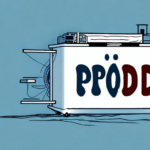Understanding the Importance of Pod Purchase Orders
For businesses that regularly purchase pods, streamlining the procurement process is essential to ensure the efficient and timely delivery of products. A pod purchase order serves as a critical tool in this process, providing a clear and legally binding agreement between your business and the vendor. By outlining product specifications, quantities, delivery schedules, and payment terms, a purchase order minimizes the risk of errors and misunderstandings, facilitating smooth transactions and fostering reliable vendor relationships.
According to a 2023 procurement report, businesses that implement structured purchase order systems experience a 30% reduction in procurement errors and a 25% increase in operational efficiency.
Types of Pod Purchase Orders
Understanding the different types of pod purchase orders can help businesses choose the most suitable method for their needs:
- Standard Purchase Orders: Used for one-time purchases of specific pod products.
- Blanket Purchase Orders: Ideal for recurring purchases of the same products over a set period, providing flexibility and bulk pricing benefits.
- Contract Purchase Orders: Employed for long-term agreements, outlining detailed terms and conditions between the business and vendor.
- Planned Purchase Orders: Created in advance to ensure product availability for future needs, commonly used for seasonal items or products with extended lead times.
Electronic purchase orders are increasingly favored over paper-based methods due to their efficiency and ease of tracking, aligning with the digital transformation trends highlighted by the Digital Commerce 360.
Key Components of an Effective Pod Purchase Order
An effective pod purchase order includes several essential elements to ensure clarity and prevent discrepancies:
- Vendor Details: Name, address, and contact information of the supplier.
- Order Details: Comprehensive description, quantity, and pricing of the pod products.
- Delivery Details: Specified delivery dates, shipping addresses, and any special instructions.
- Payment Terms: Payment methods, amounts, and due dates.
- Terms and Conditions: Additional agreements and stipulations between the business and vendor.
- Purchase Order Number: A unique identifier for easy tracking and reference.
Including all these components ensures that both parties have a clear understanding of the expectations, reducing the likelihood of disputes.
Step-by-Step Guide to Creating and Submitting a Pod Purchase Order
Creating a detailed pod purchase order involves several methodical steps:
- Gather Information: Compile product specifications, quantities, delivery dates, and vendor details.
- Choose a Template: Use a standardized purchase order template to maintain consistency.
- Fill in Order Details: Accurately enter product descriptions, quantities, and pricing.
- Specify Delivery Instructions: Clearly state delivery dates, shipping addresses, and any special instructions.
- Outline Payment Terms: Define the payment method, amounts, and due dates.
- Add Terms and Conditions: Include any additional agreements or stipulations.
- Review and Approve: Thoroughly check all details for accuracy before approval.
- Submit to Vendor: Send the purchase order through the agreed-upon method, preferably electronically for efficiency.
- Confirm Receipt: Ensure the vendor has received and acknowledged the purchase order.
Adhering to these steps helps in creating a comprehensive and accurate purchase order, facilitating smooth procurement processes.
Choosing the Right Vendor for Your Pod Needs
Selecting the appropriate vendor is crucial for ensuring the quality and reliability of pod supplies. Key factors to consider include:
- Product Quality: Assess the quality standards of the vendor’s products through samples and reviews.
- Pricing: Compare prices among different vendors to ensure competitive rates without compromising quality.
- Delivery Time: Evaluate the vendor’s ability to meet delivery deadlines consistently.
- Customer Service: Strong support and responsive communication are vital for resolving issues promptly.
- Reputation: Research the vendor’s reputation through customer reviews and industry ratings.
- Location: Proximity can affect shipping times and costs, making local vendors advantageous for timely deliveries.
- Payment Terms: Ensure the vendor’s payment terms align with your financial practices and capabilities.
Using resources like the Better Business Bureau can help verify vendor credibility and reliability.
Best Practices and Common Mistakes in Pod Purchasing
Implementing best practices and avoiding common pitfalls can enhance the efficiency of your pod purchasing process:
Best Practices
- Standardize Processes: Develop a consistent procedure for creating and submitting purchase orders.
- Utilize Automation Tools: Leverage procurement software to streamline order creation, submission, and tracking.
- Maintain Accurate Records: Keep detailed records of all purchase orders for reference and auditing purposes.
- Regularly Review Orders: Periodically assess purchase orders to identify areas for improvement.
Common Mistakes to Avoid
- Omitting critical details such as delivery dates or product specifications.
- Using incorrect product codes or descriptions, leading to order inaccuracies.
- Neglecting to include clear payment terms, causing payment delays.
- Submitting orders late, resulting in delayed deliveries.
- Failing to follow up with vendors to confirm receipt and acknowledgment of orders.
Adhering to these best practices and being mindful of common mistakes can significantly improve your procurement efficiency.
Tracking and Managing Your Pod Purchase Orders
Effective tracking and management of pod purchase orders are essential for maintaining inventory levels and ensuring timely deliveries. Here are some strategies:
- Centralized Database: Use a centralized system to store and manage all purchase orders, facilitating easy access and updates.
- Inventory Monitoring: Regularly check inventory levels to anticipate future needs and avoid stockouts.
- Order Status Tracking: Keep track of each purchase order’s status, including processing, shipping, and delivery stages.
- Vendor Communication: Maintain open lines of communication with vendors to stay informed about order progress and address any issues promptly.
- Reporting and Analytics: Utilize reporting tools to analyze purchase order data, identify trends, and make informed procurement decisions.
Implementing these strategies can lead to more efficient order management and better alignment with business objectives.
Optimizing Your Pod Purchasing Process with Automation Tools
Automation tools can significantly enhance the pod purchasing process by reducing manual tasks and increasing accuracy. Key automation solutions include:
- Procurement Software: Platforms like Oracle Procurement and SAP Ariba automate the creation, submission, and approval of purchase orders.
- Accounting Software Integration: Integrate purchase orders with accounting systems such as QuickBooks to streamline financial tracking and reporting.
- Inventory Management Systems: Tools like TradeGecko help in monitoring inventory levels and automating reorder processes.
Adopting these automation tools can lead to increased efficiency, reduced errors, and enhanced visibility into the procurement process.
Legal Considerations and Dispute Resolution in Pod Purchase Orders
Pod purchase orders are legally binding contracts that outline the terms and conditions of the transaction. It is crucial to understand the legal aspects to protect your business:
- Terms and Conditions: Clearly define the responsibilities and expectations of both parties, including delivery schedules, payment terms, and quality standards.
- Liability Limitations: Specify the extent of liability in cases of product defects, delays, or other issues.
- Dispute Resolution: Establish procedures for resolving disputes, such as mediation or arbitration, to avoid lengthy legal battles.
In the event of a dispute, follow these steps:
- Initiate direct communication with the vendor to discuss and resolve the issue.
- Document all correspondence and agreements related to the dispute.
- Seek legal counsel if the dispute cannot be amicably resolved.
Understanding and addressing these legal aspects ensures that your pod purchase orders are enforceable and that your business is safeguarded against potential conflicts.
Resolving Disputes and Issues with Your Pod Purchase Orders
Disputes can arise despite careful planning and detailed purchase orders. To effectively handle such situations:
- Open Communication: Promptly address any issues by communicating directly with the vendor to seek a mutually agreeable solution.
- Documentation: Keep detailed records of all transactions, communications, and agreements to support your position.
- Mediation: Consider involving a neutral third party to facilitate a resolution if direct negotiations fail.
- Legal Action: As a last resort, pursue legal action to enforce the terms of the purchase order, ensuring compliance with relevant laws and regulations.
Proactively managing disputes helps maintain positive vendor relationships and minimizes disruptions to your procurement process.
Streamlining Your Finances with Pod Purchase Orders
Pod purchase orders play a pivotal role in financial management by providing a clear record of transactions and facilitating effective budgeting:
- Expense Tracking: Detailed purchase orders allow for precise tracking of expenses, aiding in financial planning and analysis.
- Cash Flow Management: Clearly defined payment terms help manage cash flow by scheduling payments in alignment with revenue cycles.
- Budgeting: Accurate order records assist in creating realistic budgets and forecasting future financial needs.
Integrating purchase orders with accounting software can further enhance financial oversight and reporting capabilities, contributing to overall business financial health.






















